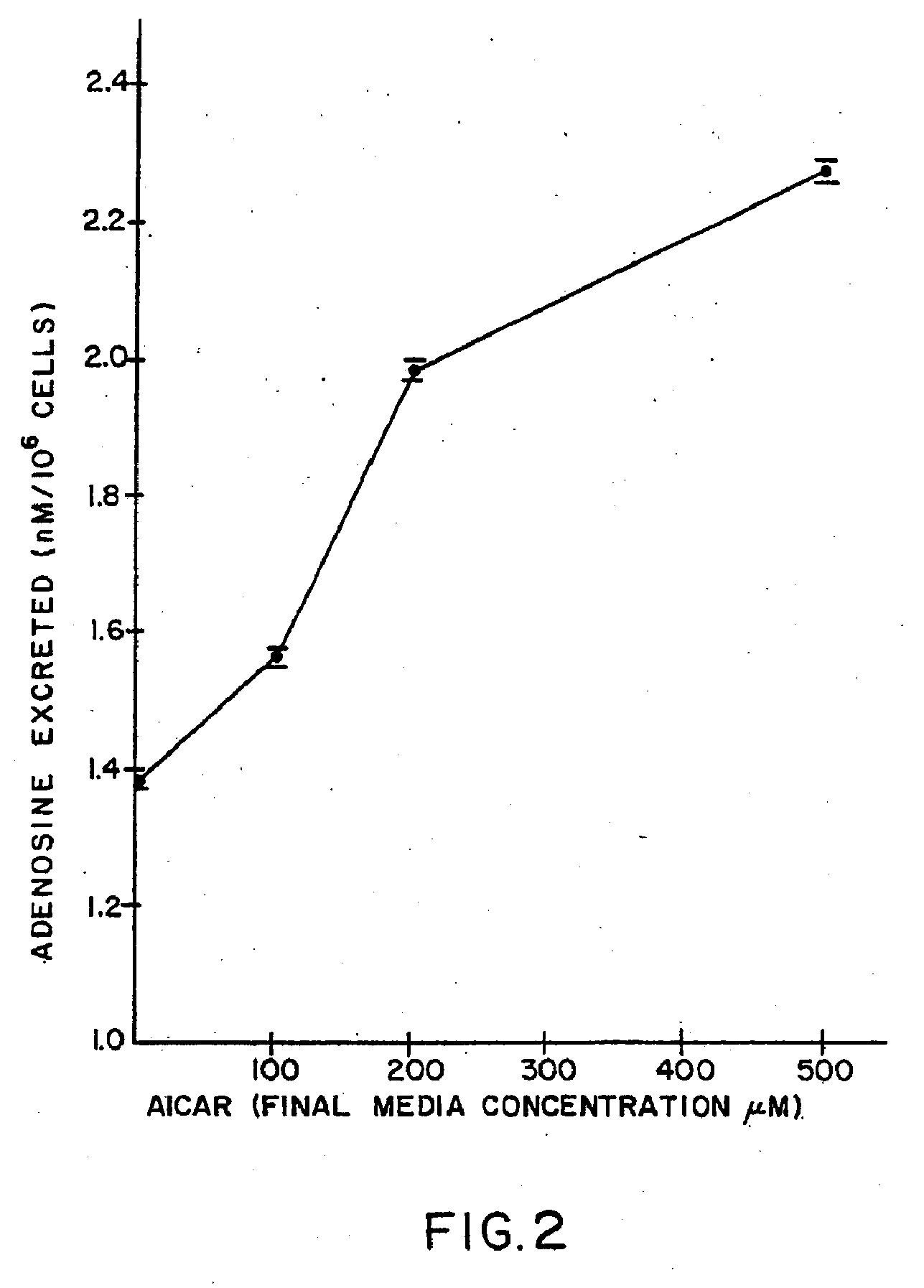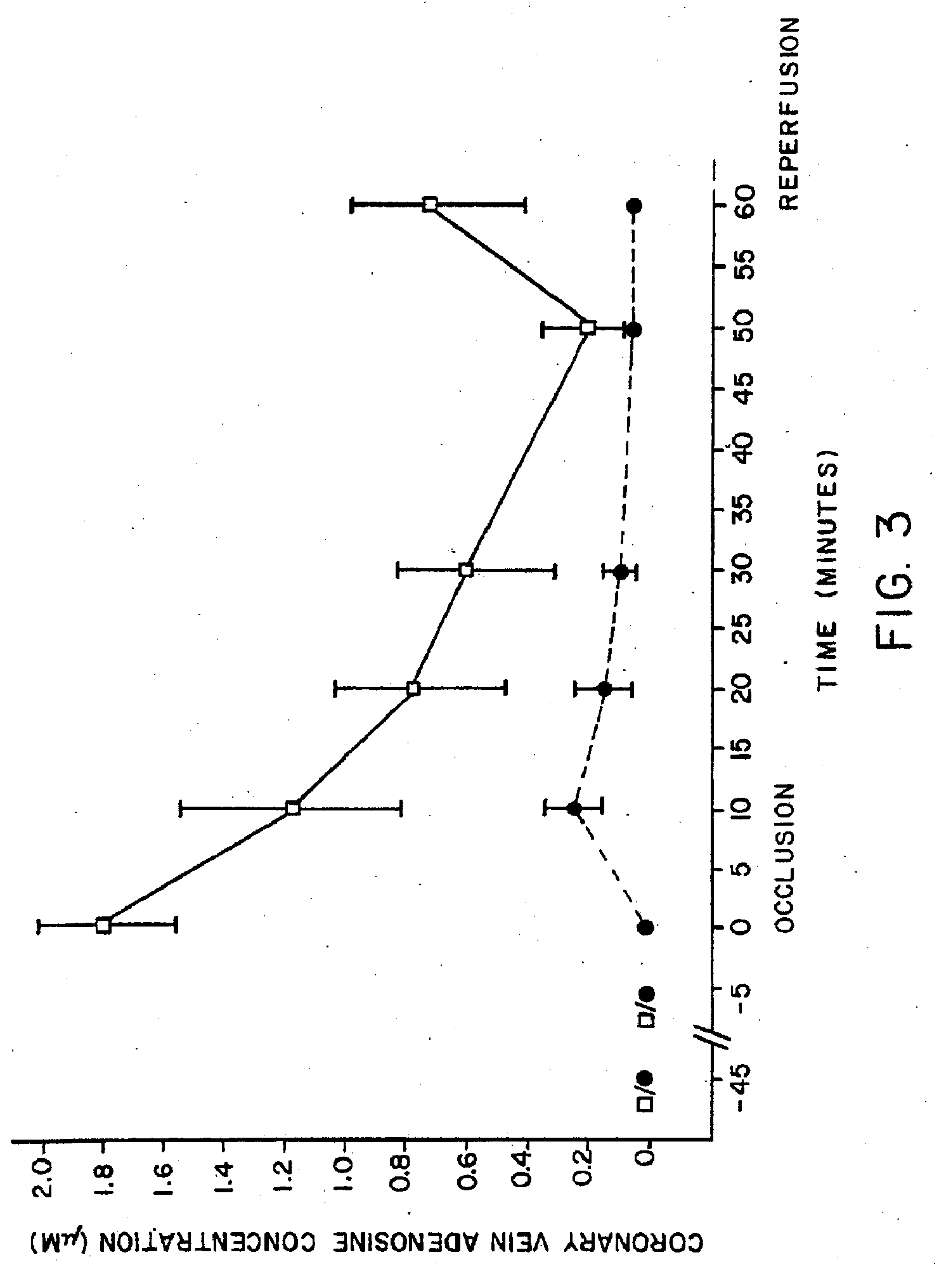Methods, Compositions, and Formulations for Preventing or Reducing Adverse Effects in a Patient
a technology of adverse effects and compositions, applied in the direction of drug compositions, antinoxious agents, extracellular fluid disorders, etc., can solve the problems of dramatic changes in normal cellular physiology, affecting nonselectively most cell types, and limited therapeutic use of adenosine alone, so as to prevent or reduce adverse effects in patients, and reduce left ventricular function
- Summary
- Abstract
- Description
- Claims
- Application Information
AI Technical Summary
Benefits of technology
Problems solved by technology
Method used
Image
Examples
examples
[0305] The following examples describes specific aspects of the invention to illustrate the invention and provide a description of the methods, compositions, and formulations of the invention. The examples should not be construed as limiting the invention, as the example merely provides specific methodology useful in understanding and practicing the invention.
Example I
[0306] AICA Riboside Enhancement of Adenosine Release by Lymphoblasts.
[0307] With regard to the enhanced in vitro release of adenosine by the claimed method, a human splenic lymphoblast cell line (WI-L2) was used to demonstrate the effect of AICA riboside on adenosine release. The history and properties of the cell line have been described by Hershfield et al. in Science, Vol. 197, p. 1284, 1977. The cell line was maintained in RPMI 1640 cell culture media supplemented with 20% fetal calf serum and 2 nM glutamine and varying concentrations of AICA. riboside, and grown for 48 hours in an atmosphere of 5% carbon dioxi...
example ii
[0310] In Vitro Effect of AICA Riboside on Adenosine Release in Neuroblastoma Cells.
[0311] There are neuromuscular diseases such as cerebral palsy, autism, schizophrenia, and insomnia where increased adenosine release may be beneficial. Neuroblastoma cell lines were grown in media and under conditions described in Example I. Media was supplemented with 0 or 50 .mu.M AICA riboside. To induce ATP catabolism, the growth medium was replaced by medium containing micromolar amounts of the calcium ionophore A23187 and 1.0 .mu.M deoxycoformycin. Under these conditions it was shown that treated cells secreted at least twofold more adenosine than control cells. Cells deficient in hypoxanthine phosphoribosyl transferase secrete twofold less adenosine than cells with normal enzyme and can be corrected by pretreatment with AICA riboside or ribavirin. The results are shown in Table I below.
TABLE 1EFFECT OF AICA RIBOSIDE ON ADENOSINE EXCRETIONBY STIMULATED HPRT.sup.− AND HPRT.sup.+NEUROBLASTOMA...
example iii
[0312] In Vivo Effect of AICA Riboside on Adenosine Levels and Increased Blood Flow in Dogs.
[0313] Experiments were conducted on dogs to test for increased adenosine levels caused by AICA riboside treatment, and the concomitant increase in blood flow resulting therefrom.
[0314]FIGS. 3 and 4 show the results of a second series of experiments carried out to demonstrate the effects of AICA riboside on adenosine levels in blood and to correlate the increase in adenosine with increased blood flow. Thirteen mongrel dogs were anesthetized with phenobarbital. The anterior coronary vein was cannulated and a blood sample was collected into 2N perchloric acid. Saline or 100 mM AICA riboside in saline was randomly selected for infusion into the femoral vein for 45 minutes prior to coronary artery occlusion at a rate of 1 ml / min. Coronary venous blood was collected and assayed for adenosine in a manner similar to the assay described in Example I at 5 minutes prior to occlusion, and after 1, 10,...
PUM
| Property | Measurement | Unit |
|---|---|---|
| time | aaaaa | aaaaa |
| time | aaaaa | aaaaa |
| time | aaaaa | aaaaa |
Abstract
Description
Claims
Application Information
 Login to View More
Login to View More - R&D
- Intellectual Property
- Life Sciences
- Materials
- Tech Scout
- Unparalleled Data Quality
- Higher Quality Content
- 60% Fewer Hallucinations
Browse by: Latest US Patents, China's latest patents, Technical Efficacy Thesaurus, Application Domain, Technology Topic, Popular Technical Reports.
© 2025 PatSnap. All rights reserved.Legal|Privacy policy|Modern Slavery Act Transparency Statement|Sitemap|About US| Contact US: help@patsnap.com



